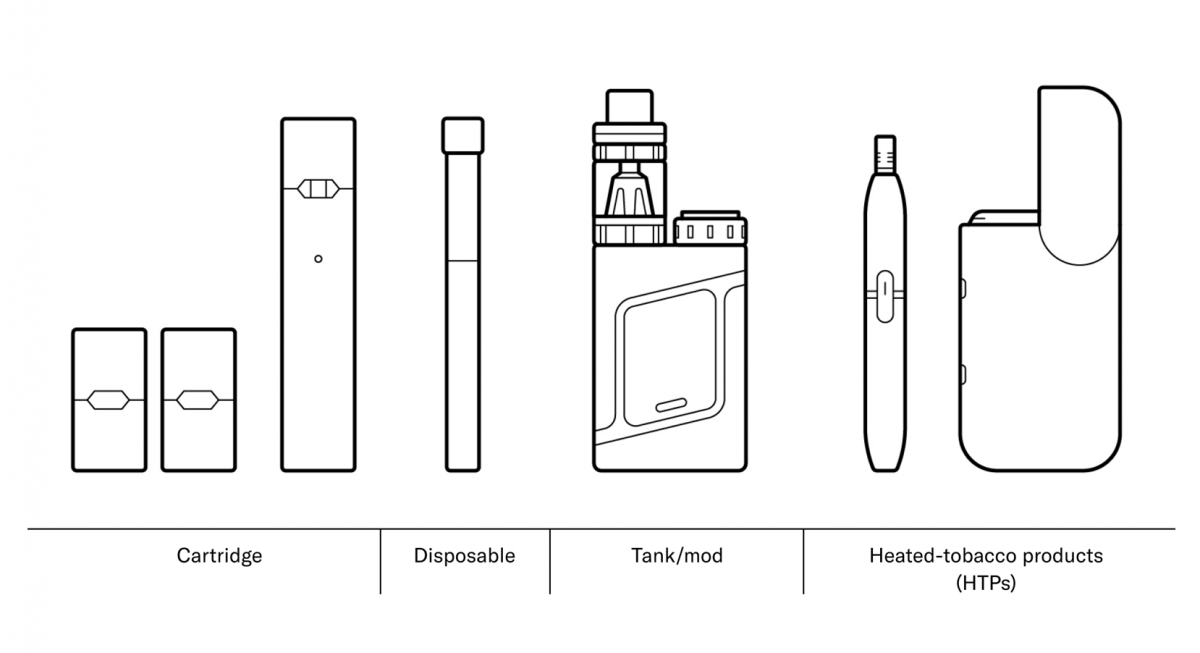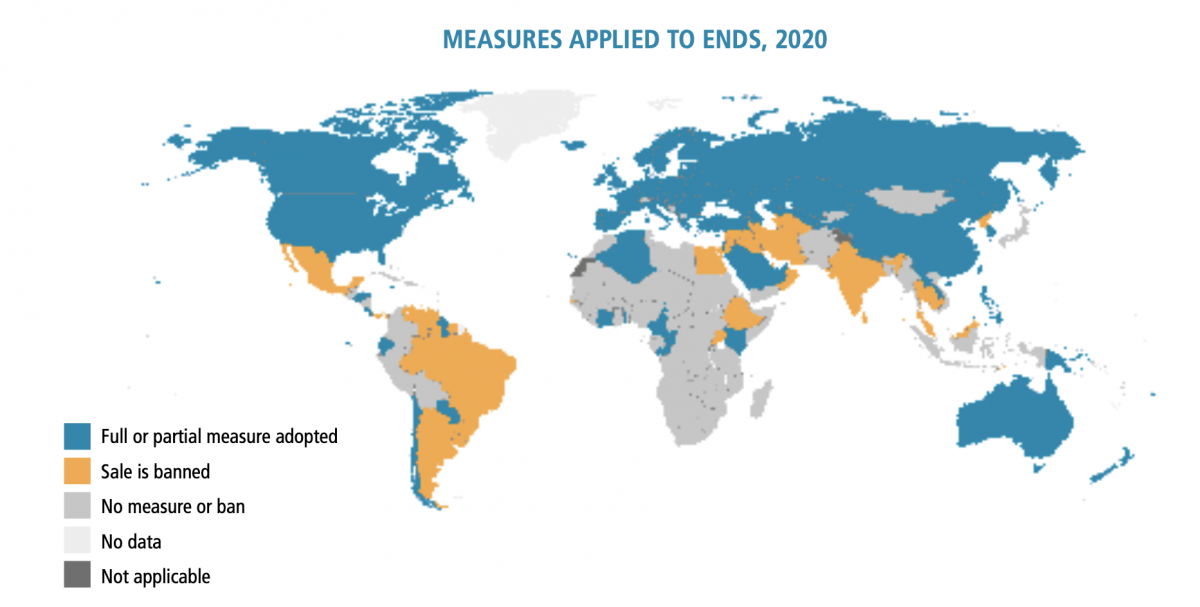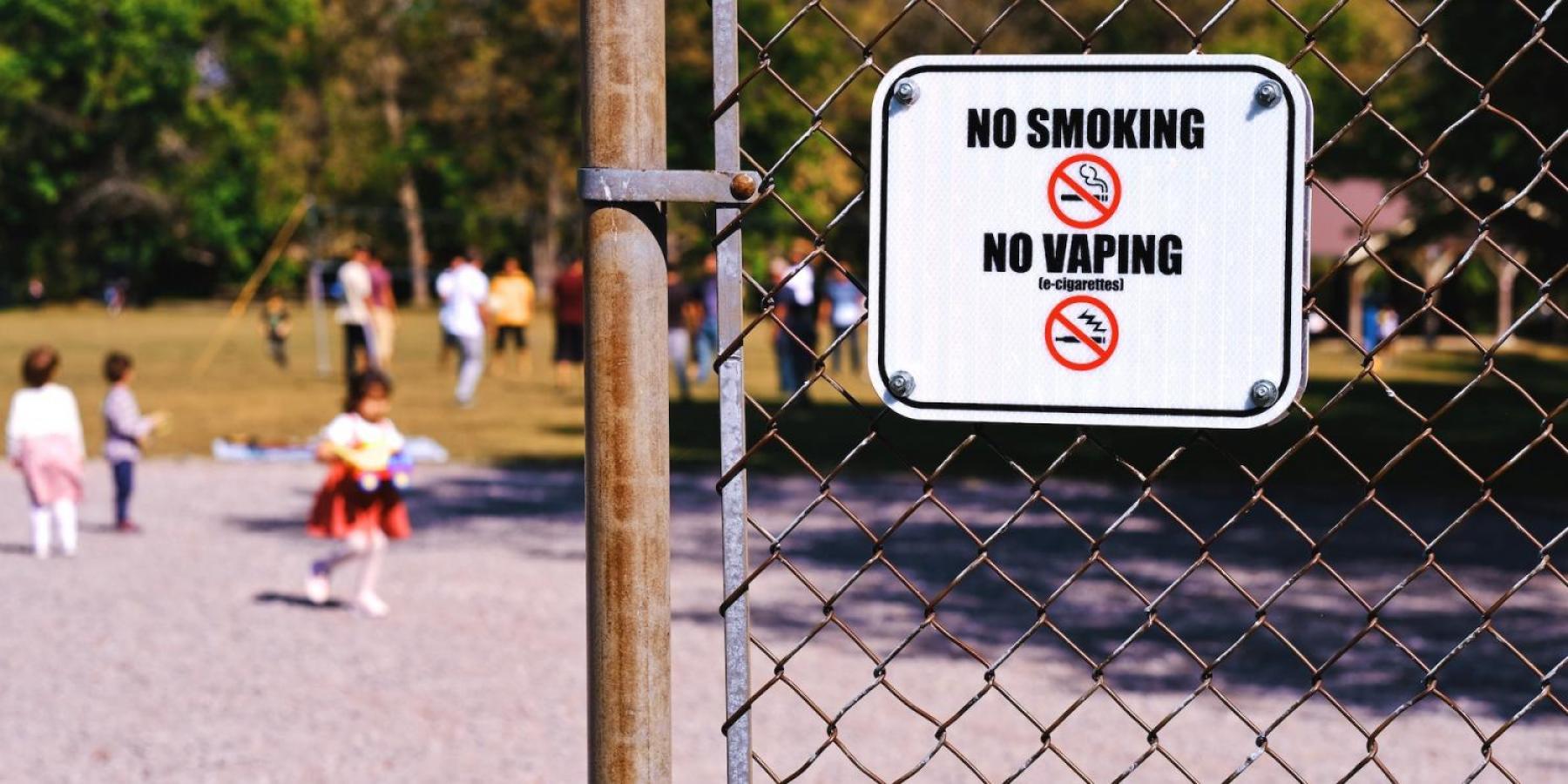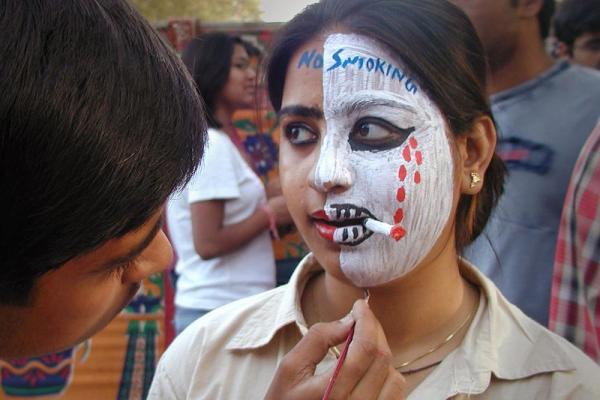Fast Facts
-
There are 1.13 billion smokers around the world. Half of them will die from a tobacco-related disease.
-
8.7 million people die each year from tobacco use while $1.4 trillion are lost to healthcare spending and reduced worker productivity.
-
Most of the deaths and years lost to disability attributable to tobacco are due to noncommunicable diseases (NCDs).
-
Tobacco consumption is one of the major risk factors for NCDs as a whole. One in six deaths by NCDs are related to tobacco.
-
The percentage of smokers (i.e., smoking prevalence) declined from 22.7% in 2007 to 17.5% in 2019 thanks to the strengthening of tobacco control measures like taxation.
-
The total number of smokers has continued to grow since 1990 due to disparities across regions and population growth. While only Europe and the Americas have achieved a decline in smoking in absolute terms, Africa and Asia have seen a sharp rise in tobacco users.
-
Some low- and middle- income countries, where tobacco consumption used to be modest, are now ranking highest in consumption rise. This is notably the case in many African countries.
-
New challenges have emerged over the last few years, especially in low- and middle-income countries. Ranging from youth use and industry interference to the rise of new tobacco products, they put at risk the sustainability of the progress made.
The health impacts of the Tobacco epidemic
Tobacco kills more than any other preventable cause of death in the world. Every year, around 8.7 million people die from tobacco use while up to $1.4 trillion are lost to healthcare spending and reduced worker productivity. Most of these deaths (7.4 million) are directly attributed to tobacco smoking, while the remaining 1.3 million relate to non-smokers exposed to secondhand smoke (SHS), also known as passive smokers [1].
To put these figures in context, of the 1.13 billion smokers worldwide, half of them will die from tobacco use [2].
Tobacco and NCDs
Tobacco is one of the major risk factors for cardiovascular diseases, chronic respiratory diseases, cancers, and diabetes. Most of the tobacco-related deaths and years lost to disability are due to these noncommunicable diseases (NCDs). In the case of tracheal, bronchus and lung cancer, for instance, tobacco stands as the underlying cause of death in nearly 90% of the cases.
There is no safe tobacco product, nor is there a safe level of consumption. Tobacco smoke contains up to 5000 chemicals, of which 70 are known to be carcinogenic [3].
State of play: uneven progress on tobacco, uncertain future
Smoking prevalence has declined from 22.7% in 2007 to 17.5% in 2019 through the implementation of tobacco control policies [4]. Since 1990, the overall decrease in the percentage of smokers was of 27.5% for males and 37.7% for females [5]. We have come a long way. Still, the absolute number of smokers has continued to rise as a result of global population growth and disparities across regions.
Of all WHO regions (Africa, Americas, Eastern Mediterranean, Europe, South-East Asia and Western Pacific), only Europe and the Americas have managed to reduce the total number of smokers over the last three decades [6]. Africa and the Eastern Mediterranean region, on the other hand, stand out as the regions where this same figure has increased the most in percentage terms – even doubled in the latter case.
Tobacco use hinders economic development, for up to 80% of tobacco users live in a low- and middle-income country – a quarter of them in China alone [7].
Growing affordability of cigarettes, lack of strong tobacco controls and the renewed efforts by the tobacco industry to establish new markets, have also resulted in staggering increases in the percentage of smokers (smoking prevalence) in some low-income countries despite the overall downward trend. This is notably the case in Africa [8].
In addition to this, a wide array of new challenges has emerged over the last few years. Ranging from youth use to the rise of new tobacco products, they cast doubt on the sustainability of the progress made. Strengthening tobacco control measures is the only way to avoid a trend reversal.
New challenges for the tobacco epidemic
The WHO Framework Convention on Tobacco Control (FCTC) aims to protect present and future generations from the devastating consequences of tobacco by providing a framework for tobacco control. Some of the key measure that parties must implement to reduce the demand and supply of tobacco include:
-
A comprehensive ban on tobacco advertising, sponsorship and promotion.
-
Strong health warnings on tobacco packaging that cover at least 30% (and ideally 50%) of the principal.
-
Protection from secondhand smoke in all indoor workplaces and public places and in public transportation.
-
A tax rate on tobacco products at 75% or more of the price.
-
Measures to reduce the smuggling of tobacco products.
Since the FCTC was established in 2005, the fight against the tobacco epidemic has gained momentum and support. Fearful of losing market share, the tobacco industry has responded in a forceful manner through a series of strategies aimed at opening up new markets and exploiting regulatory loopholes.
Big Tobacco interference
In the same way that the industry was engaged in creating doubt about the scientific evidence on the link between smoking and health risks [9], big tobacco is now focussed on undermining the case for higher tobacco taxes and tobacco control in general. Misleadingly, the tobacco industry intends to be perceived as a legitimate partner in tobacco control, while in reality trying to push regulation back.
Among other things, the tobbaco industry takes advantage of knowledge gaps among politicians and lack of data to spread misinformation and promote myths to counter legislation [10]. This is especially true for untapped markets in low- and middle-income countries.
Aggressive marketing strategies towards youth
One of the main reasons why the tobacco industry is shifting focus to low- and middle-income countries is their growing child and adolescent population. Tobacco companies employ a number advertising and promotion tactics to reach out to youth like the sale of single stick cigarettes, the display of cigarettes near snacks, sweets and sugary drinks and the marketing of flavoured tobacco products [11].
The tobacco industry is also entering less regulated channels like social media [12] and Corporate Social Responsibility (CSR) [13] to bypass tobacco control and market its products to the youth. From sponsoring youth-oriented events to donating protective equipment for healthcare workers and ventilators during the COVID-19 pandemic, big tobacco is using CSR to divert attention from the product itself and clean up its image.
Emerging e-cigarette, vapes and new tobacco products
Heated tobacco products (HTPs) and liquid-based electronic nicotine delivery systems (ENDS) or e-cigarettes (also known as vapes) have been on the rise in recent years.
Regulatory mechanisms are struggling to keep pace with the continuous emergence of HTPs and e-cigarettes, which has opened a window of opportunity for these companies, especially during the COVID-19 pandemic [14].

Tobacco Atlas, 2022
Although ENDS don’t contain tobacco, there is growing evidence that e-cigarettes are not harmless, whereas heated tobacco products were defined as conventional tobacco products and included under the FCTC in 2018 [15]. Even though they are usually marketed as smoking cessation aids, these tobacco and nicotine products prevent those trying to quit regular tobacco from succeeding, while many end up becoming dual users [16]. They also contribute to attracting former and new smokers, youth being the most alarming case, for using ENDS doubles their chances of becoming regular smokers of conventional tobacco [17].
Hope for tobacco control
Given the strong response of the tobacco industry following advances in legislation and regulation, it is more important than ever to continue to move forward and strengthen tobacco controls to counter this deadly offensive.
The framework for tobacco control policy is ripening
Most countries experienced their largest decline in smoking prevalence during the decade following ratification of the FCTC [18].
Although to date only two countries (Turkey and Brazil) have implemented all the control measures at best-practice level, 75% of countries and 5.3 billion people are now protected by at least one measure at the highest level according to the MPOWER monitoring framework established in 2007 by WHO [19]. Among these measures, major progress has been made in smoke-free legislation, health warning labels, taxation and bans, advertising and illicit tobacco trade. Yet, low-income countries continue to be the great absentees.
Following the inclusion of the FCTC in the Sustainable Development Goals (SDG 3.A) in 2015, the United Kingdom was joined by Australia and Norway under the FCTC 2030 project to support low- and middle-income countries in the implementation of the framework.
E-cigarettes and vapes: a long way to go
Given that they remain outside the FCTC, ENDS or e-cigarettes are one the blind spots of tobacco control. Of the 163 countries that permit the sale of ENDS, a total of 84 countries have no legislation in place regarding ENDS, whereas 94 countries do not impose any age restriction to these kinds of products [20].

WHO Report on the Global Tobacco Epidemic, 2021
Children and adolescents in low- and middle-income countries are in a vulnerable position against the marketing strategies used by the tobacco industries to appeal to them (child-friendly flavours, eye-catching new technology, etc.). The fact that most smokers start smoking on a regular basis before the age of 20 makes the case to regulate ENDS more urgently than ever. Here lies an opportunity to tackle the problem at its root [21].
Tobacco taxation works!
Despite the incessant efforts of the tobacco industry to discredit it, taxation has proven to be the most effective way to reduce consumption. The evidence suggests that for every 10% increase in price from higher taxes, there is a decrease in tobacco use of 4-8% [22]. Tobacco taxation is inexpensive to implement while the extra revenue can also be used to finance more tobacco control regulations, thus creating a virtuous circle. The economic benefits far outweigh costs, which makes higher tobacco taxes a cost-effective intervention – a so-called WHO bestbuy [23].
Tobacco taxation, however, is the least expanded of all control measures, with only 40 countries and 13% of the world’s population being protected in 2020 by a tax rate at 75% or more of the price, the best practice level [24]. Although the number of countries belonging to this category has almost doubled since 2008, thanks in large part to the work of civil society, to date only one (Madagascar) is a low-income country [25].
In the case of ENDS or e-cigarettes, taxation rates are even lower, with only three countries taxing these products at the best practice level [26].



